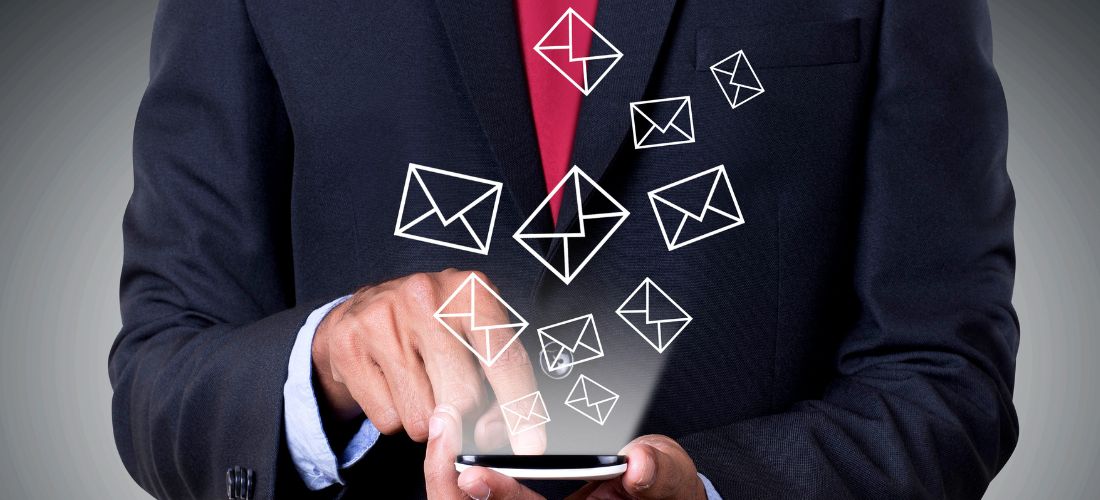Updated 08/01/2025
SMS has long been used by businesses for an array of reasons, from internal communications to the marketing and promotion of products and services.
Moreover, a key use of SMS in businesses is to enhance customer service.
What Is SMS for Business Customer Service?
In short, SMS messaging for business customer service is the process of using text messages to communicate directly with customers.
The majority of all businesses already use email, phone calls, or support tickets for customer service, however SMS communication allows customers to receive support whenever and wherever they are, from the comfort of their own mobile phone.
With 90% of consumers preferring to interact with brands via text message, and 86% of calls to businesses being placed on hold, SMS holds huge value over its conventional counterparts. Also, it’s often that consumers are unavailable or unwilling to talk on the phone (particularly to make a complaint) and are not always able to send or receive an email (i.e. no 3G or Wifi). This is where SMS customer service is invaluable.
The Benefits of Using SMS for Customer Service
The benefits of using SMS for customer service include:
- It’s convenient & accessible
- Highest open & response rate
- It can be incredibly cost effective
- You can personalise SMS messages
- It builds brand trust
1. It’s Convenient & Accessible
Text messaging is one of the, if not the, most popular forms of communication because it is just so convenient. In fact, a recent study from LeadFerno showed that texting is the top choice for communication channels, with 37.6% of participants saying text messaging is their top communication channel, with 30.2% saying phone calls, 19.6% selecting email and the rest choosing direct messaging platforms.
Texting, unlike email or phone call communication, allows customers to initiate conversations and seek assistance with a simple text, eliminating the need to wait on hold or navigate through complex automated phone systems.
As well as being convenient, SMS is also accessible to a wide audience, including those without smartphones or internet access. This accessibility ensures that a larger segment of customers can engage with your business, which is great news.

SMS remains a critical messaging channel for businesses of all sizes.
2. Highest Open & Response Rate
SMS currently has the highest open rate compared to other popular communication channels, as texts are pretty impossible to ignore. While Messenger and WhatsApp which can easily be muted, SMS notifications typically can’t, so they are most likely going to capture the attention of the customer as soon as the message is delivered.
Research at Mobilesquared supports this, reporting that ‘55% of all SMSes are read [while] 100% of SMSes are viewed’. As text messages are delivered and read quickly, it allows for timely responses and quick fixes, unlike email responses or phone calls which leave the customer waiting for hours on end for a resolution.
In fact, ‘SMS has eight times the response rate of email’, with the average SMS response rate being about 45%, very high compared to other marketing channels, like email with around a 6% response rate.
3. It Can Be Incredibly Cost Effective
Another fantastic benefit of using SMS for customer service is the fact that SMS can be more cost-effective than traditional customer service channels like phone support. Fast SMS communication reduces the need for prolonged agent interactions and can handle a high volume of inquiries at one time.
This cost-effective nature makes SMS a highly attractive option for businesses that are just starting out and don’t have the largest budget but equally value customer satisfaction and want to offer high quality customer service.
To learn more about the increasing use of SMS in business, be sure to read this guide.
4. You Can Personalise SMS Messages
Businesses can use customer data to personalise SMS messages, for example addressing customers by first name.
This adds a personal touch and quickly can create a sense of familiarity and connection between the business and customer, which in turn increases satisfaction and loyalty.
Businesses can also tailor SMS messages to the customer’s purchase history and interests, for example sending personalised discounts, offers, and promotions.
5. It Builds Brand Trust
Lastly, SMS also builds brand trust.
Customers look for a connection with the brands they engage with, and using SMS for customer service is a convenient way to do just that.
Using SMS for customer service provides one-on-one communication that in turn helps you to illustrate your unique personality as a brand whilst simultaneously demonstrating how much you value your customers, both of which help to build trust.
Why Is Brand Trust Important?
Brand trust is important for many reasons, but mainly because it helps to differentiate you from competitors and plays a crucial role in helping you retain loyal customers.
When you consider that consumer attitudes towards brands are shifting, emphasised by a survey finding that ‘88% of consumers in the UK said it was important for them to trust brands they bought or used‘, the importance of businesses prioritising building brand trust becomes all the more evident.

By proactively reaching out to customers via SMS with various offers, discounts and general customer service help, customers will feel much more engaged and valued, rather than if they were to be contacted via email or phone.
Using SMS for Customer Service
There are a number of ways businesses can use SMS to streamline their customer service and improve customer satisfaction.
- Two-way communication line – If you have two-way SMS set up, you can have a back and forth conversation with customers, responding to queries and issues and offering solutions as quickly as possible. This is much more direct and personal than replying back and forth to an email, or customers having to wait on hold to speak to an agent.
- Order and delivery updates – Sending customers SMS notifications about transaction confirmations, order status or delivery updates not only keeps customers in the loop but it also enhances the personalised experience.
- Appointment reminders – Personalised SMS reminders can be sent for appointments, reservations, or bookings, showing that you value their time and care about their commitments.
- Birthday wishes – Using SMS to send personalised birthday messages, perhaps with a discount included, shows that you value the customer as an individual, not just any customer.
- Welcome and Onboarding – Businesses can also send SMS messages to welcome new customers or clients, providing them with essential information about your products or services and creating a space for any questions or queries.
The Best Practices for Using SMS for Customer Service
Personalise Messages
When communicating with your customers, especially when it comes to offering solutions to their problems, personalisation is absolutely crucial because it shows you’ve taken the time to listen to them. For example, if a customer has a complaint, always refer to them by their first name and solve any problems from previous text messages to ensure that you deliver the highest quality service.
Automate Messages for Efficiency
Automation is crucial when offering customer service via SMS because it will allow you to send automatic replies to save time and therefore increase efficiency.
Instead of manually responding to every inquiry, you can leverage SMS chat bots or automatic responses to answer common questions, for example how long delivery will be, when the refund will be or changing the delivery address.
That said, while automation can save time, it shouldn’t completely replace human interactions. Some more complex inquiries require a human customer service agent and some consumers might just prefer it.

It’s best practice to always give customers the option to chat to a live representative if they wish.
Obtain Feedback
Getting feedback about your service is key if you want to constantly improve your efforts as it provides insight into how customers truly feel. For example, after each SMS interaction with a customer, send them an automated text asking them to rate their experience.
This feedback will allow you to learn from any mistakes and take action to ensure your support team is providing the highest quality customer service possible.
Monitor and Analyse Metrics
Last but certainly not least, it’s important to keep track of important metrics like open rates and response rates, as they provide insight into how well your SMS customer service strategy is currently performing. By identifying what’s working and what isn’t, you can refine your SMS content, timing, and strategies for better results.
In addition to monitoring your own metrics, knowing essential intelligence around the SMS messaging market is crucial when investing in your own SMS strategy. This is where our updated global A2P SMS Dataset & Report becomes invaluable.
A2P SMS Dataset & Report 2017-2027
This report is our most far-reaching view of the SMS messaging market yet, spanning 2017-2027 (including actual data for 2017-2022 and forecasts 2023-2027), with additional new data categories added.
This essential intelligence is supplied as a 108 page market report including detailed global and regional analysis outlining the impact of all major developments affecting the marketplace, and what it means for the short, medium, and long-term future of A2P SMS messaging. What’s more, it offers access to our online SMS dataset containing over 12 million individual data points across 200 markets and 640+ mobile operators.
Cost to access market report plus dataset is £6450, or market report only £2500. Discover the full table of contents here.
How We Can Help
We are Mobilesquared: mobile engagement specialists delivering the very best independent mobile market intelligence to our clients. We are the established #1 global authority on business messaging and CPaaS, with our data shaping business plans, strategy, and customer engagement modelling, for some of the world’s leading brands, mobile operators, and messaging providers.
Get in touch via telephone (01182149 777) or email (info@mobilesquared.co.uk) to learn more about what we do and discover how we can help your business.
Written by Kate, for Mobilesquared.


